BAE is set to cut 2,000 jobs across the UK, mainly from it’s aviation sector. Orders have slowed for the venerable Hawk trainer jet, but the main reason is a slowdown in the orders for the Eurofighter Typhoon.
Tom Jones is the Deputy Editor at Raddington Report, has an interest in UK foreign policy and security capability and has contributed this article.
Once considered another shining example of European aviation cooperation, the product of a working union between the UK, Germany, France, Italy and Spain. Yet the Typhoon, whilst a capable aircraft, has not proved as successful as hoped. Why?
The first problem is that the Eurofighter is mainly suited to an interception role; something that the majority of aviation customers do not value particularly highly. Although an excellent dogfighter, since the end of the Cold War interceptors have less and less of a role in the structure of modern airforces; threats to the nations able to afford the Typhoons from nations with comparative airforces has decreased.
The current trend is towards airframes which are more capable of striking targets on the ground. The Eurofighter has proved adaptable at providing air-to-ground strikes, performing the role well in Libya, but it isn’t as well suited to this role as more adaptable multirole fighters, such as those offered by Russian jets like the Mig-35, the SU-27 (and it’s derivatives), Lockheed Martin’s F-35, the F/A-18 Hornet, the F-16 Fighting Falcon or the king of ground strike capability, the F-15E Strike Eagle.
The other problem takes the shape of two particular aircraft. The Typhoon is far from the only delta-wing interceptor on the market. There is, firstly, the Saab Gripen. The Gripen costs half as much as the Typhoon and, although an older aircraft, the Typhoon does not have twice the capability of a Gripen. Far from it, in fact; the Gripen’s performance, as with almost all 4th Gen. aircraft, is remarkably similar and with upgrade to avionics can prove extremely capable in terms of performance.
A huge number of nations currently operate the Gripen, as it offers real value and is remarkably easy to use, with quick operational turnaround times and the ability to take off from far shorter runways that they Typhoon.
The second aircraft is the Dassault Raffale. Originally, Dassault had been part of the consortium created in order to produce the Typhoon, but pulled out due to the differing requirements of the French military, the principle demand being that the new aircraft be carrier-capable.
This meant that orders from the French military were lost, a huge planned order of some 286. The lack of carrier operability also resulted in the the Raffale capturing the Indian export market, another potentially lucrative market (although the deal was less lucrative than first planned). Even though there is less deck space on carriers, the decision to make the Typhoon a solely ground-based aircraft seems foolish, as it massively reduced the number of potential orders. It is important to remember, however, that the aircraft was made to serve, rather than earn money in exports.
Added to the Eurofighter’s woes is that, thanks to the economic crash, there has been less money available for large-scale defence procurements. Whilst this has not stopped many continuing to purchase aircraft, it has caused many to look at less expensive options, or scale back orders. For an aircraft such as the Eurofighter, which is markedly more expensive than direct competitors, this was bad news.
Although it compares well to other aircraft, isn’t simply particularly well suited or adaptable adaptable to the needs of modern militaries.
It is unlikely the Eurofighter will continue to pick up further orders, although there is the possibility of gaining contracts in Asia, amongst other possible smaller buyers; production on the Eurofighter is more likely, however, to peter out by 2020.




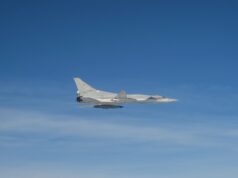
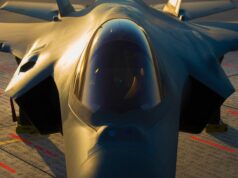

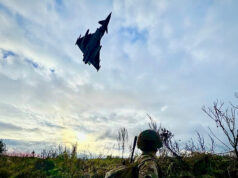
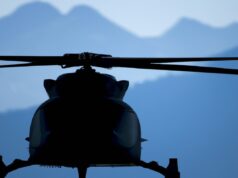
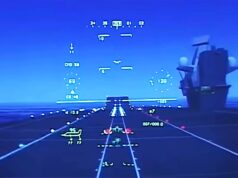
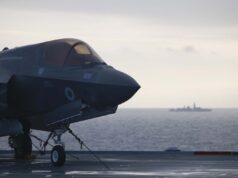

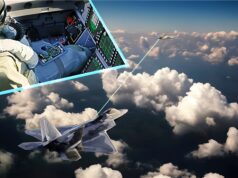

It’s Rafale not Raffle FFS
Yes, people make mistakes.
Schoolboy errors though
No one died or suffered harm, let’s give the author a break and a bit of thanks for taking the time to produce the paper that’s free for us all to enjoy.
If it was written by a schoolboy far enough, but I doubt it was.
To be frank the article is poorly written and mostly without any substance.
The author could have mentioned the Danish fighter competition, or RAF IAF exercise which pitted Typhoons against SU30 or countless other examples which compared the Typhoon against its rivals.
But as you say it’s free, as a point of interest I tend to find the comments section more interesting than the articles.
Interesting stuff. Does this mean the Typhoon will still be far less capable than the Tornado in ground attack mode even after all the planned upgrades?
Typhoon.
1 It’s costs more than its rivals.
2 It’s not as capable as it’s rivals.
3 It’s development was painfully slow.
4 Why buy a 4th generation aircraft when you can buy a 5th generation aircraft for less cost.
Bollox.
Cogent Ron… but Mike is correct.
I like Ron5’s spirited response! But I know Mike is a critic of the Typhoon, and has summarised the suggested failings of the programme rather well.
It costs more: The unit cost of Typhoon is just over 100 million dollars; I believe Rafale is about the same, or a little cheaper. The F35 is reported as somewhere between 80 to 170 million dollars per aircraft! (I’m guessing the higher figure is probably more realistic!)
Not as capable as its rivals: That’s not what RAF pilots, or their USAF counterparts, regularly report.
Development was painfully slow: Yes – but not greatly more than some if its contemporaries. Typhoon entered service 2003; Rafale in 2000.
Why buy a 4th Gen fighter instead of a 5th Gen?
Perhaps – but Typhoon’ s performance capabilities are considerable, and for that reason, commonly described as a 4.5 generation fighter. And why should some air-forces waste national treasure buying capabilities in the F35 that they will never use?
If anyone thinks an F-35 will ever deliver the weapon load a Typhoon can is deluding themselves. And Mike quietly forgot to mention that once you stick weapon pylons under those lovely stealthy F-35 wings guess what? You no longer have stealth.
Now that isn’t to say the F-35 isn’t a very capable weapon for what it is. And how we plan to use them enabling Typhoon GA ops is an excellent plan. But F-35 will never ever deliver Brimstone or Storm Shadow from its internal bomb bay and is not the bomb truck the Typhoon is and will become. So F-35 remains an enabler by use of advanced stealth and sensor suites. One of a team.
So we then get to discuss if Typhoon really is such a failure:
It is or will be operational in 9 Air Forces
It has 623 confirmed orders and in bids for other Air Forces.
Rafale was mentioned so:
It will be operational with 4 Air Forces
It has 221 confirmed orders.
I cannot really comment on the Gripen JAS 39 but I believe there is some truth in the adage ‘you gets what you pays for’ and in military equipment you pays a lot. But all the same:
It will be operational with 6 Air Forces (not counting The UK Empire Test Pilots’ School) although 28 Swedish Air Force aircraft are leased to the Czech and Hungarian Air Forces
It has 226 confirmed orders
I think the numbers speak for themselves and any dispassionate look would tend to confirm the Typhoon is the class leader (outside the USA which is in itself a bigger market than the rest of the world)
Mike. It is not possible to say exactly how much the F-35 costs. The National Audit Office and the Parliaments Public Accounts Committee have estimated the final cost for the Typhoon project at £17.6 billion. For the 160 aircraft to be delivered this equates to a unit cost of £110 million but this includes ancillary project costs such as design and development. BAE, with MOD agreement are now quoting a delivery unit cost for new Typhoon orders at £87 miilion. The Qatari unit price is £90 m complete. The cost of an F-35B is far less clear. On 26 Jan 2017, the defence minister, Harriet Baldwin, in response to a question asked in Parliament about the unit cost for an F-35, in a written reply stated “I am withholding details of this funding as its disclosure would prejudice commercial interests.” The closest official statement by the UK government came in a National Audit Office report, “Delivering Carrier Strike”( 16/3/17). This report disclosed that £5.8 billion had been allocated to provide 24 F-35B for delivery by 2021. This equates to £241 million per aircraft. The actual cost per aircraft is not disclosed. Increasingly the unit cost quoted is for the airframe. Engine, radar and metallic paint are extras.
“The Gripen costs half as much as the Typhoon and, although an older aircraft, the Typhoon does not have twice the capability of a Gripen”
This is such a dumb statement.
It doesn’t have to be ‘twice as good’ to justify the cost. Would you rather have an aircraft, say 10% better, at twice the cost, if that 10% margin means the difference between your plane & pilot coming home in one piece and the pilot of an opponent force, floating down to the ground on his parachute ?
In defence, you get what you pay for, and the Gripen is cheaper for a reason, it’s just not as good.
Well said. I bet all the pilots in cheap Migs that went up against an F15 were happy that their countries had been able to save a couple of dollars. The US shut down F22 production in part because of costs but they are now questioning the wisdom of that decision. In addition to considering restarting F22 production, the US intention to introduce a cheap,propeller driven ground support support aircraft acknowleges that even jets like the Gripen are overkill in low intensity operations. I would be interested to learn how a F-35B (with its limited wing span) in non stealth mode compares with a Typhoon.
And when sales peter out the next project is……nowt
Number 2 is decidedly arguable and misleading and only stands up at all because of the slowness or lack of will to incorporate weapon systems rather than anything to do with the airframe itself or its capability. Indeed in that regard it competes extremely well against most competitors especially its direct ones. Sadly cost is the serious problem however not capability.
An additional reason why the Eurofighter hasn’t sold as well as it should is down to the fall of the Iron curtain and the so called peace dividend. Nothing to do with which is the better plane. When the plane was being developed the planned sale figures were to be:
UK: 250 aircraft,
Germany: 250,
Italy: 165
Spain: 100.
Current holdings are:
UK: 160 aircraft,
Germany: 143,
Italy: 96
Spain: 73.
Even adding sales to Austria,Kuwait and Saudi Arabia the total production run comes in at 599. Which is still 166 short of the original purchase plans for the 4 European countries who built it. Regards the breakaway of the French and the loss of 286 kites, the total production run for the Rafale at the moment is 160 and that includes India, and Egypt , so even they have cut back and until recently the Rafale was seen as an also ran.
An interesting snippet about the Grippen is it has an air-to-air data link which allows real-time exchange of tactical data within and between cooperating air unit which allows radar-derived surface data to be transferred from one Gripen to a group of radar-silent attacking aircraft.
Other than the F22, (and the F15E carrying the HATE pod) I don’t think anybody else has this ability and may explain why the Grippen has sold so well. (I won’t mention thee Swiss)
Can we agree that the F22 and F35 are superior to the Typhoon?
https://breakingdefense.com/2016/05/f-35-wins-denmark-competition-trounces-super-hornet-eurofighter/
In that competition the F35 won and F18E was considered superior to Typhoon.
Then comes the question is Typhoon better than the SU30 Flanker?
theaviationist.com/2015/08/08/have-indian-su-30s-really-dominated-raf-typhoons-in-aerial-combat-with-a-12-0-scoreline-most-probably-not/
I think the IAF claims of a 12 to 0 win are inflated, but based on the evidence presented it appears the Flanker is superior in the air combat role.
The Indian competition which pitched the Rafale against Typhoon, saw the Rafale score higher in all selection criteria. This I consider was mainly due to a lack of development of Typhoon to reach its full potential.
http://www.quora.com/India-Did-India-make-the-right-decision-in-choosing-the-Dassault-Rafale-over-the-Eurofighter-Typhoon
So against its main rivals it seems the Typhoon does not cut the mustard.
What a terrible article, overly simplistic, full of contradictions, and seems to define Tyhoon as a failure compared to Gripen and Rafale, which have sold fewer combined than Typhoon has! This is a classic, which contradicts itself in the same sentence:
“Although it compares well to other aircraft, isn’t simply particularly well suited or adaptable adaptable to the needs of modern militaries.”
Swing and a miss there, UKDJ.
Or to put a more positive spin on the aircraft, the F22 is double the cost again but maybe only a fraction more capable in the air defence role. And when the storm shadow, Brimstone 2, Spear 3 , Metor, E scan radar and many more upgrades the Typhoon will be a true multirole world beater. Problems have been the slow integration of strike capability, and it is expensive, though no more expensive than a rafale or a super hornet and certainly know more expensive then the F35. and if saudi Arabia finally orders another 48 or 70 as has been rumoured, then production will last a good few years yet. Even the Germans have been talking again about a tranche 3B order.
Bullocks. The Typhoon can’t even get within shooting range before it is destroyed by a Raptor. Dogfights don’t decide modern aerial warfare. It’s locate, identify and fire. An F-22 can fire its AIM-120 AMRAAM before the Typhoon even knows it is there because of the F-22’s superior radar, sensors, and stealth. The statement that the F-22 is only slightly more capable in the air defense role demonstrates a total ignorance of modern warfare.
Did you even read my comment?. Red flag exercises and many other multi national exercises have show the Typhoon to be very close to the capabilites of the F22 in many aspects. The Americans hold the Typhoon in very high regard due to its capabilities. A Typhoon is never going to go against at F22 for real, so its a totally pointless comparison, they work together extremely well, due to similar high altitude performance and both can supercruise to get maximum launch range on there weapons. This isnt a top trumps thred mate, I’m not here to argue.
Not only can Typhoon get within range of Raptor for an AMRAAM firing solution, it has done so on a number of occasions during training.
The Typhoon has a very small frontal radar signature (generally small all round), thanks to careful design and the radar dish is angled while at rest.
Its Captor radar, though mechanical at this point, is still a very powerful, reliable and extremely capable radar.
The frontal design of Typhoon allows for a large dish, which in turn equates to excellent range detection.
When Captor E is operational, it will employ technology 20 years newer than Raptor too.
As other contributors have pointed out, its extremely unlikely the two types will ever clash ( unless Saudi Arabia goes rouge) and a teaming of Raptor and Typhoon is a truly formidable force!
As has been said, the US hold the type in very high regard.
There is also the excellent DAS and PIRATE to consider.
Before forming an opinion on the Typhoon’s future the actual status of the F-35 should be considered. The National Interest has got hold of the Director of Operational Testing and Evaluation for the F35 annual report on status of F35 development (The F35 Program Continues to Stumble. publish 3rd of October). It describes how almost every system to failing to reach operational minimum requirements. It is absolutely damming. The report contains such detail it must have been released because there are very serious concerns about the F35 problems. If correct it really is eye opening. This does not even address the limitations that the reduced wing span of the F-35B suffers from. (The 35B’s wings were clipped because of space limitations on the US Marines baby carriers and requirements for littoral operations.)
http://nationalinterest.org/blog/the-buzz/the-f-35-program-continues-stumble-22589
For sure the F35 has had a painful birth and if they knew back in 2001 what we know now I doubt the project would have been sanctioned.
But we are where we are, and national interest.org has a long record of being critical of the F35.
We hear glowing reports from pilots who have flown it and it’s participation in red flag exercises has shown it’s superiority over 4th generation aircraft. Of course these could be lies, but doubt that.
There simply isn’t any aircraft available that can match the F35 so despite its problems and cost issues it will sell in the thousands.
By the way I was under the impression that the B variant wings were the same as the A variant.
That is correct, only the A variant has larger wings.
You mean “C”
Interesting how F-15’s were designed for air superiority, yet worked well in ground attack when edited into the F-15E.
Not withstanding the availability of other air frames at less cost, is there any potential to edit a Typhoon into a Typhoon-E, would it be worthwhile cost wise?
Wing strengthening for increased loads, wrap around conformal fuel tanks for increase range etc.
Mike. I read the headlining news about the performance in Red Flag, with kill ratio’s 20-1 or 15-1 reported. Sounded impressive. But there a a number of reports that suggest caution. The Rules of Engagement were not released. F-35’s were apparently accompanied with F22’s and acted as data nodes, without any external weapons and were used as sensor fusion spearheads to provide information to supporting assets like B1’s and F22’s. In short the kill ratio may be correct, but for the overall package rather than the discrete F35 performance. There is a lot of pressure to obtain good PR for the program. The report describing the range of the F35’s problems is very detailed.
National interest is very anti F35 and has been for a long time. I question who they’re loyal to and what country or countries would benefit the most by there being fewer F 35s to have to go up against.
I knew before I read that DOT&E report that it would be out of data and indeed it is.
It claims that WDA tests remain incomplete…. but the USAF announced their completion in August (For A & C, B is imminent)
Those DOT&E reports are always out of date.
It must be because they don’t do any testing or evaluating of any kind, despite their moniker.
They just compile the information given to them by the JPO and release a scathing release months later.
Not surprisingly Dr Gilmore was not asked to remain in position by the new administration.
Joe. You are obviously well informed. Like every report released about a defence project, they all have to been taken with a pinch of salt.
Was talking at work to an Austrian work colleague this morning.
Austria wants to sell / phase out its Typhoons in the next few years because of maintenance costs expected; their government are thinking about picking up used F-16s from AMARG or maybe even used Mig-29s and saving billions of Euros because the maintenance is much more expensive than expected.
Add in that Austria got Tranche 1 airframes at 20million Euros apiece more than the expected Tranche 2s, mainly due to slipping schedules and the fact that Austria is constitutionally obliged to defend it own airspace or the WW2 Allies are olbiged to step back in and do it, so they had to take what was on offer.
As a result, the word “Eurofighter” is a dirty word in Austria. Maybe the project has bad press elsewhere too.
Certainly, the Royal Navy is suffereing from the direction the project took; the UK would probably have much cheaper and already equipped carriers if the naval variant option and the French had stayed in the programme….
For what’s coming I think we may be very grateful for that delay over the coming years
My impression is that with the completion of project Centurion, Typhoon will be as capable as any for strike/CAS. Add Aesa radar and conformal fuel tanks, will be then head and shoulders above any other western 4g aircraft – perhaps with exception of Rafale. Speed to maturity was the issue, but that was a result of building it to excel in A/D first of all – driven by need to replace Tornado F3, Starfighter and Phantom in NATO air forces. This is a badly written report, see it as that
Well said.
There is also the Aerodynamic Modification Kit to fuselage strakes and leading-edge root extensions. These upgrades have been tested and are reported to provide dramatic improvements to manoeuvrability.
My top 10 of combat aircraft currently in production or service.
In order of superiority.
F22
F35
SU30/35
Rafale.
Typhoon
F18E/F
F15
Gripen
F16
Mig35
Please feel free to mock and be critical my list.
I think you have listed ALL the aircraft currently in production…..
I ignored the PRC to a lack of information
Not a bad list Mike, but I’m surprised that you’ve placed the superlative Typhoon at a lowly Number 5 in your charts.
For instance, it has superior performance to Rafale; including a super-cruise capacity, something which reports indicate the French fighter lacks. The ability to penetrate a high-threat environment at high-speed, and an altitude of 40, 000 feet, is a great advantage to survivability.
The low-speed manoeuvring of the Su30/SU35 family is eye-catching; but I would argue the supersonic agility of Typhoon is more relevant in an operational environment: acquiring a target at long range, accelerating quickly beyond Mach 1, discharging a BVRAAM missile – and then a max-G break away from danger, is how today’s Top Guns will return home for tea and medals!
Interesting to see that you’ve got the F16 in your list; great fighter no doubt, but as I’ve posted elsewhere – to put any comparison into context, a pilot on No. 29 squadron (with an F16 exchange tour under his belt) told me that Typhoon makes the F16 feel like a trainer!
Can’t argue with F22 and F35 at the top of your list, but recent Red Flag exercises would indicate that Typhoon is comparable to the American fighters in some operational profiles.
Accepted, some air-to-ground capabilities were missing from early production batches, but that was always more of a funding issue – than anything lacking in the basic design of the aircraft.
Incidentally, despite the author’s comments, Typhoon is no slouch in the export market either – with 150 aircraft delivered, or on order. I would argue that current employment concerns at Warton are largely in the UK government’s decision to slash it’s order from 230 to only 160 units.
Good to debate with you, Mike.
Check this link…. hopefully it will show an image relating to a the ‘Atlantic Trident” exercise a couple of months ago
http://www.f-16.net/forum/download/file.php?id=25541&sid=ee2bb26b80e16de27d221f17f3495ab1&mode=view
Alan, my logic behind the decision of placing the Rafale above Typhoon was that the former beat the Typhoon in the Indian contest.
Apparently the Rafale beat the Typhoon in all IAF selection criteria.
Hi Mike, In India, Typhoon was beaten by Rafale in the 2011 MRCA competition on price. (Indeed that original deal later fell apart when Dassault couldn’t deliver on their commitments).
Incidentally, the French fighter was rumoured to have been eliminated in the tender after the technical evaluation phase – but later reinstated following a protest by the French government.
Everybody seems to forget Kuwait selected the Typhoon on performance, financial considerations being subordinate to significant defence threats. The French and US lobbied intensively for the Rafale, F-18 and F-15. It would appear the Typhoon performed acceptable.
Mike – I would ask you to look at the full context of how the French ‘sold’ the Rafale. Initially the original plan was to buy 126 Rafale jets. They went in underpriced to kill the competition. Then Hindustan Industries found that the declared costs and the amount of technical transfer was not quite what the glossy sales brochure said. India was deeply dischuffed and cancelled the order. Given their defence needs and the need to ‘save face’ they purchased 36 Rafales in fly-away condition for a whopping $8.8 billion or $244 Mn each but got two very low cost nuclear power stations as well. (Not that EDF are State owned of course). No technology transfer or local build will happen for these 36 Rafales. Similar sweeteners were offered to Egypt to buy Rafale who took the Mistrals off French hands. And which will now be equipped with Russian helicopters.
India is now looking at F-18s or MiGs (an aircraft they know) for their carriers and a single engined fighter like the Gripen or F-16. If I had money to spare I would put £20 on India not buying American.
As for Typhoon given Canada’s huge row with the USA over Boing / Bombardier we really should be in there offering full technology transfer and local build for say 66 of the 88 aircraft Canada need with RAF training support and also tell Boeing the Poseidens are ‘on hold’ while we look at C100s with LM fitting all the radars and other UK stuff as they proposed with A320s. If the French can play politics to win orders so should we.
“A huge number of nations currently operate the Gripen”
– Thailand: 12
– South Africa: 26
– Czechia: 14 (leased)
– Hungary: 14 (leased)
– Sweden: 90
Yep…. Huge!
Well, you did leave out the UK (as part of the Empire Test Pilots’ School).
“A huge number of nations currently operate the Gripen”
“The first problem is that the Eurofighter is mainly suited to an interception role; something that the majority of aviation customers do not value particularly highly”
“the Gripen’s performance, as with almost all 4th Gen. aircraft, is remarkably similar”
“Even though there is less deck space on carriers, the decision to make the Typhoon a solely ground-based aircraft seems foolish, as it massively reduced the number of potential orders”
“Although it compares well to other aircraft, isn’t simply particularly well suited or adaptable adaptable to the needs of modern militaries”
Tom Jones is either a total moron or gets his opinions from the Kremlin.
If you go back 3 or 4 years, the Typhoon would be an excellent choice for interception and interdiction, and with ground capabilities, a very sensible choice.
Since then the Gripen has moved on, the F35 has matured, and it would need a T4 for the Eurofighter to have a fighting chance, and since that’s not going to happen, then vey sadly that’s the end of Typhoon after a few more years.
Hi Dads, I’m a big fan of the F35 and the outstanding “Situational Awareness” that it promises the pilot – and Joe’s link above gives some indication of it’s capabilities.
And if you want to join the Americans on the opening night of a major conflict, and dismantle a “Top Division” Integrated Air Defence Network – then the F35 is the boy for you.
But most air-forces outwith NATO don’t need that kind of capability (indeed, some NATO air-forces don’t need it either!). That’s what makes me think 4.5 generation fighters like Typhoon and Rafale, and others like the Gripen, will be competitive in the export market for a few more years yet.
I hope so, I’m still a fan of the Typhoon. A problem though is production numbers and therefore cost of keeping them going. Eurofighter I think is around 600 total, whereas F35 has expected orders already for 3,000. Cost alone of keeping the Typhoon going might well shorten their life.
It is useful to know that the UK provides about a third of the parts of a Grippen so that is not all bad news at all that it sells well. And 10-15% of the F35.
The Typhoon, like the Tornado, show that whilst international collaborations look attractive as you share costs, you also end up with a slow, expensive, fudge. The collaborative Typhoon ended up costing more and not being ready as soon as the single nation Rafale, and, the Grippen, made by a much smaller Sweden, outsold it in export terms.
BAe should get on with producing a Hawk successor, and, joining with Saab to make Typhoon/Grippen 2.
The Grippen is my favorite. Cheap to buy and operate, and only needs short runways sometimes as simple as a road with a fuel truck and support vehicle. The airframe is almost as good as a Typhoon, and combined with Meteor it would beat the current Typhoon and currently almost everything outside of NATO.
If it had conformal tanks shaped in such a way as to make the body a more stealthy shape and a twin tail, plus carrier capable landing gear it would be even better. The good thing is Saab are developing all the time and add the new good stuff like Meteor much quicker than anyone else. It’s also small and only 7 tons empty so no big carriers needed for a decent number and Chinook liftable so cross decking additional aircraft from a transport ship for example easily possible.
I wish our carriers had been 40t tons on a Tide Class hull with 24 Sea Grippens, UAVs and 12 Wildcats. Also nuke powered to free up space for aircraft fuel and add reactor numbers to our fleet thereby reducing the cost per reactor. At only 40t tons we wouldn’t have needed to dredge Pompy as much either and a FAA Sea Grippen would have mixed with the RAF Typhoon very well.
wow…..well it doesn’t have conformal tanks, nor twin tails and there is no Sea Gripen, unless Sweden and the cash strapped Brazilian or Thai navies want to finance it, then quadruple the price for the couple of dozen that would be built, and you’ve still got another single engine carrier aircraft…..When the talk of Argentina buying some Brazilian made Gripens hit the headlines, and the UK made it clear that with what a 1/3 of the aircraft having UK components replacing those with new items would have made the aircraft ridiculously expensive, same will happen developing a carrier version now
Why would you want to carry your more expensive carrier version so at least >£70mil plane from a transport ship by a chinook, why not fly them to it, seems an odd consideration.
The meteor is entering service on the Gripen first simply because it was the trials aircraft so integration is easier, no other reason, it will be in service next yr on Typhoons, yr or so later on Rafale. How many of meteors can the Gripen carry in an air to air role, remembering they are not recessed on Gripen, so high drag, no supercruise, reduced range etc etc….
Gripen is a great European aircraft but is ideal for Sweden, as was the Viggen and Draken before it, but in essence the Gripen really became the modern version of an F16, a cheaper more economical lightweight alternative to the bigger (but not necessarily better) twin engine competitors.
If we were going to buy Swedish aircraft it should have been Viggens back in the 70s
Typhoon cost too much.
“The cost of the Typhoon project has risen substantially. Despite the MOD’s now buying 72 fewer aircraft (down from 232 to 160, a reduction of 30 per cent), the forecast development and production cost has risen by 20 per cent to £20.2 billion. This is a 75 per cent increase in the unit cost of each aircraft. The cost of supporting each aircraft has also risen by a third above that originally expected. The MOD now estimates that, by the time the aircraft leaves service, some £37 billion will have been spent.”
NAO report.
Here endeth the lesson.
Hardly a lesson, Mike.
To get a true comparison, you need to compare like-with-like – as I tried to do in an earlier post. Quoting an NAO report in isolation doesn’t add great value to the debate.
Just to recap, the unit price for Typhoon is about £80M.
The figure of £37B is an estimated total cost of the programme, until the aircraft’s out-of-service date in about 2040.
Actually, you could argue that this investment is money well spent in retaining a UK strategic skill-set in advanced fighter design and manufacturing – although our friend TH would no doubt take issue with that!
Come on Alan, you can do better than that in defence of the typhoon project.
The true cost of typhoon including R&D is around £125m.
You may not like the evidence, but do not deny the truth of the matter.
Typhoon costs too much, so the only export success achieved was to oil rich Arab nations.
TH likely takes issue with money spent on toilet paper as it is unnecessary in his mind to buy things your going to flush.
Mike. The National Audit Office and the Parliament’s Public Accounts Committee have estimated the final cost for the Typhoon project at £17.6 billion. For the 160 aircraft to be delivered this equates to a unit cost of £110 million but this includes ancillary project costs such as design and development. BAE, with MOD agreement are now quoting a delivery unit cost for new Typhoon orders at £87 miilion. The Qatari unit price is £90 m complete. The cost of an F-35B is far less clear. On 26 Jan 2017, the defence minister, Harriet Baldwin, in response to a question asked in Parliament about the unit cost for an F-35, in a written reply stated “I am withholding details of this funding as its disclosure would prejudice commercial interests.” The closest official statement by the UK government came in a National Audit Office report, “Delivering Carrier Strike”( 16/3/17). This report disclosed that £5.8 billion had been allocated to provide 24 F-35B for delivery by 2021. This equates to £241 million per aircraft. The actual cost per aircraft is not disclosed.
As far as I am aware Qatar has not yet placed an order for typhoon so no contract price exists.
Looking back a couple of years the Kuwaitis procured 28 typhoons form Italy and the contract was priced at €8bn.
Using that as data the cost of a single typhoon is €285m. So to say a typhoon £87m does not fit reflect the actual cost.
https://www.defensenews.com/home/2016/04/05/kuwait-signs-eurofighter-jet-deal/
Mr Saul 1
1. Letters of intent have been signed for the Qatar deal and it seems most reports are based on these details. The price I used for the Qatar was from the FT.
https://www.ft.com/content/4994a434-9bbf-11e7-8cd4-932067fbf946?mhq5j=e5
2. I made no mention of the Kuwait cost as it was irrelevant to the observation that the Kuwaiti’s chose the Typhoon over Rafale, F18 and F15 on performance. Finmeccanica reported to the Italian stockmarket that the deal was worth E7 billion and it included service support as well as training for flight and ground crew. The cost of the deal varies from E7 billion to E8.7b, depending on which report you read.
3. The £110m I quoted the cost of a Typhoon was based on the National Audit Office and Parliament’s Public Accounts committee. It included design and development cost. The £87m +/- is apparently what BAE are now quoting, free of development cost. However even at £110m it still makes it cheaper the the F35 and does not support your earlier statement that the F35 or 5th gen is cheaper. In other words you post was not accurate.
3. I
John you are just manipulating numbers to try and support your arguement.
Sorry that’s doesn’t wash, you have to examine the total cost of purchase and ownership to get to a true figure.
There have many articles on this website regards the cost of F35, the only conclusion one can draw from those articles is that the F35 will be cheaper to procure than a Typhoon.
Mike.
I am not manipulating anything.
1. I provided the source for the Qatari cost. I quoted the FT report cost. This £90m cost concurs, in a real deal, with other reports, from various sorces, that BAE was looking at a unit cost for future Typhoon sales of £87m. The overall agreement, from various reports and events, supported the credibility of this figure.
2. The £17.4 billion for the Typhoon cost comes from the National Audit Office, Major Projects Report, 2015. Page 64. This provides a unit cost for the 160 Typhoon fleet, of £108.381,250 / aircraft. (£108m).
3. I made no mention of the Typhoon unit cost in the Kuwaiti deal. My point was the Kuwaiti’s appeared to have selected the Typhoon, rather than the Rafale, F-15, F-18, primaraly on performance rather than cost. I did question your reliance on a single report in Defencenews, which included a host of ancillary costs, including even training. I urged caution on relying on this single overall figure when other reports, in serious publications, reported costs for the deal ranged from £7b to £8.7b.
So my position is the most reliable unit cost for a Typhoon, based on all 3 Tranch deliveries, according to the NAO, is £108m. The reports of a Typhoon unit cost that BAE is now asking is about £90b, (no development costs included) appear accurate. As far as the UK’s F-35B unit cost is concerned, I refer you to my earlier post …”On 26 Jan 2017, the defence minister, Harriet Baldwin, in response to a question asked in Parliament about the unit cost for an F-35, in a written reply stated “I am withholding details of this funding as its disclosure would prejudice commercial interests.” The closest official statement by the UK government came in a National Audit Office report, “Delivering Carrier Strike”( 16/3/17). This report disclosed that £5.8 billion had been allocated to provide 24 F-35B for delivery by 2021. This equates to £241 million per aircraft. The actual cost per aircraft is not disclosed.” I have not found any officially sanctioned statement on the unit cost to the UK for an F-35B.
On this basis I do not agree with your post that it is possible to state the F-35B is cheaper than both the project and current unit cost of a Typhoon. If you can provide an official cost to the UK for a complete F-35B operational aircraft, I would be interested to hear. Even an agreed cost that was quoted in separate articles in serious publications would provide a provisionally acceptable basis.
https://www.nao.org.uk/wp-content/uploads/2015/10/Major-Projects-Report-2015-and-the-Equipment-Plan-2015-2025.pdf
There is one ace in the pack that nobody has mentioned about Typhoon – the Pirate IRST. The Raptor currently does not have a IRST. The F35 will have a 360 degree IRST which is supposedly a generation ahead of the Thales system. However, the Pirate system coupled to the Typhoon has proven to not only detect Raptor but also track it. Therefore if the F35 system is a generation ahead, how good must it be? Typhoons have been known to track Su35s using Pirate to give a BVRAAM firing solution. We are not talking AMRAAM here kids but Meteor, so that is at least 50Km plus. Which is well outside the counter engagement range for Su35.
Today’s Air to Air tactics are basically: “he how can see first can shoot first!” This is one of the many reasons that Raptor and Typhoon are teamed together, not only can the Typhoon keep up in the super cruise regime, but the Typhoon use its IRST to scan for threats whilst it also acts as weapon store for the Raptor. In the Air Superiority role, look at the Typhoon’s weapon load compared to other aircraft. It can still manage super cruise when max loaded, I don’t think Rafale can even get close!
The other point to note, is that the RAF’s main concern in the 90’s was to replace the Tornado F3 in the long range inceptor role. The Interdiction and Ground Attack role was going to be undertaken by the Future Strike Aircraft i.e. replacing the then Jaguar and Tornado GR1 fleet, which eventually turned into the F35. However, due to the delays and the perceived short legs of the B version, a requirement was needed to help eke out the Tornado’s service life. Hence, the Tranche 3 and later versions of the Typhoon to turn it into a true multi-role aircraft.
Due to the large wing area of the Typhoon, it will never be as a good as a Tornado in the low level penetration role. But then, the F35 will be doing this task, as it has designed-in stealth to help reduce the risk. Typhoon will be used for the second phase of the operation i.e. post SAM cleansing in a less risky environment.
Once, money is available (if ever) the aero, electronic and weapon upgrades to the aircraft which are all already earmarked which will hopefully include the thrust vectoring system. Furthermore, the EJ200 still has a 20% growth margin which still hasn’t been used yet. With the earmarked upgrades the aircraft will remain a force to be reckoned with! Su35 or Typhoon, I know which aircraft I’d put my money and faith in!
Well said Dave, a good all round assessment of the Typhoon.
The Typhoons most dangerous and most likely opponent will be the various export Flanker derivatives.
We can all agree the Su35 is a fine looking and very capable aircraft, the culmination of 40 years of continual development.
However, all the Flanker’s share a very large visual, radar and Infrared signature, plus high electronic systems emissions, admittedly all these areas have been improved to some extent with the Su35.
A Typhoon will still “see” a Flanker, no matter how advanced, via the aircrafts highly capable integrated active, passive and electronic support systems, long before the Su35 driver even knows the Typhoon is there…first look, first kill.
When he’s inside the Meteors envelope (and he will be before he realises he has company), the Flanker’s a dead man walking, escape is extremely unlikely.